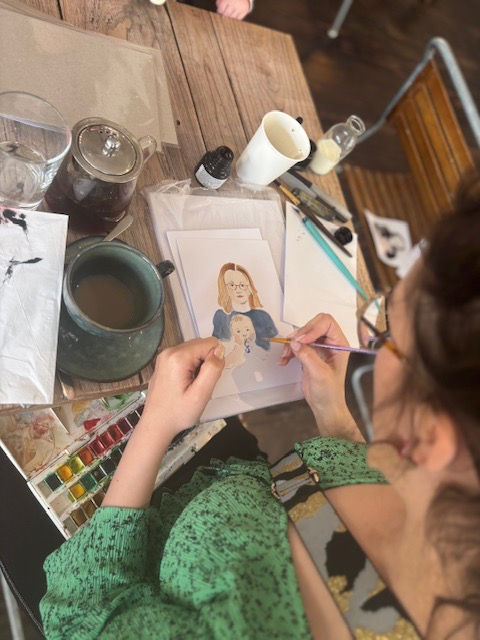Behind the scenes: battling with redrafting an illustration
- wrightcarys

- Nov 7, 2023
- 3 min read
In this blog, I want to talk about redrafting an image and how creating lots of versions, though frustrating, can lead to satisfaction. Do you know that feeling when you have an illustration in your head - so clear - that you just don't know how to put on paper? I had that recently, and I wanted to share the process with you.
I have had this image of a boy and a dragon flying over London in my mind for some time. I've been working on a story about these two characters for some time now, and this image summed up the magic of the story in my mind. But I had a problem. Every time I sat down to try and get it down on paper, I felt nervous and self-conscious. I didn't know how to execute my idea.
I started with some rough thumbnail sketches, and in fact these date back quite far in my sketchbook. The composition wasn't too much of a struggle, but the scene itself was.

I did an initial colour rough in Procreate, and in fact I was initially quite happy with this. But I realised that it looked digital in a way that most of my work doesn't and this didn't feel quite right. What I did like though about working digitally was using layers. This let me move the characters around and work on them on a separate layer.

So I decided I'd separate the characters from the background in paint as well, so that I could really concentrate on getting the right angle, view and atmosphere without worrying about how this would impact my characters. But I painted something I really didn't like! Here it is:

Oh it's pretty ugly - I know - and this bothered me. It looks like a weird kind of snake moving across fields, not a city. Still, I wanted to see how it would be to overlay the characters on top. It looked like this.

There was something not right here, and I knew it. But I had to take a break for a while to think about how to fix it. I went away and made some other work. The Goodship Illustration, whose great courses I've taken, talk about putting work in a 'magic drawer' - essentially putting it out of sight for a while, and sometimes when you then look at it again it either looks better or you can see how to problem solve.
The Magic worked! When I came back to the image, I could see that the angles didn't match - there was a bird's eye view of the landscape and a more above/side on view of the characters. So I added in a horizon line, and at this point it started to come together. I went back to procreate as it is faster for me.

Now things were starting to take shape. But again, it looked very digital to me. I also felt I'd lost some of what was working with the lights I had going on at first. I did some mini tests in my sketchbook at this point, as I was a bit nervous of making another ugly painting. I opted for a mix of gouache and neocolour, and went to work on the painting itself.

Now I was feeling a bit better. Above is the plain image, which I then cleaned in Procreate and added some digital clouds. Meanwhile, I painted the characters in gouache and scanned them into Photoshop. I then combined the layers and there we have it! The final image at last.

If you've read this far you might be wondering what the point is - well, really what I'm trying to is share that 'final' artwork can take a really long time and lots of perseverence. I think normally when I see an image I really admire, I imagine the artist making it effortlessly in one fell swoop. But I haven't found it to work like that in practice - or rarely anyway.
Rather than get discouraged by ugly drafts that have you tearing your hair out - just try again! It will probably work out in the end. And if you have a little critique group, or a mentor, even better. I must credit both of those in this process too. I hope I can take this rather painful but ultimately rewarding process forward and cling on when I want to give up on an idea. And I hope it helps you, too.




Comments